#BIM Coordination Services
Text
Trusted BIM Coordination Experts for Construction
Discover the pinnacle of BIM coordination expertise with our seasoned team of construction professionals. Leveraging cutting-edge technology and years of industry experience, we specialize in seamless collaboration and clash detection across all phases of your project. From intricate architectural designs to complex MEP systems, our trusted experts ensure precision and efficiency throughout. With a meticulous eye for detail and a commitment to excellence, we streamline workflows, mitigate risks, and deliver projects on time and within budget. Experience the difference with our BIM coordination services, where innovation meets reliability for unparalleled construction success.
0 notes
Text
The Power of MEP Outsourcing in Reducing Rework and Costs

In the construction industry, time and money are two invaluable resources. Any delay or cost overrun can significantly impact a project's success. Mechanical, Electrical, and Plumbing (MEP) systems play a crucial role in the functionality and efficiency of a building. However, their installation and integration can be complex and prone to errors, leading to rework and inflated expenses. To combat these challenges, many construction firms are turning to MEP outsourcing services as a strategic solution.
1. Specialized Expertise
MEP outsourcing brings on board dedicated professionals with specialized knowledge and experience in mechanical, electrical, and plumbing systems. These experts are well-versed in industry standards, regulations, and best practices, minimizing errors and rework stemming from inexperienced or untrained staff.
2. Streamlined Project Timelines
With focused teams dedicated solely to MEP tasks, project timelines are streamlined. This acceleration ensures projects progress efficiently, meeting deadlines and client expectations. Shorter timelines translate directly to cost savings by reducing labor and overhead expenses.
3. Cost-effectiveness
Outsourcing MEP tasks optimizes resource allocation, mitigating unnecessary expenditures. External firms often possess cutting-edge tools and technologies, sparing construction companies from investing in expensive equipment or training programs. Furthermore, firms can scale their workforce as needed, avoiding the burden of maintaining a large in-house team during quiet periods.
4. Mitigated Liability and Risk
BIM Services Provider shifts responsibility for design, installation, and performance to external firms. This reduces legal and financial exposure for construction companies, as outsourcing partners assume accountability for errors or failures. In the event of defects, the burden of litigation and reputational damage is minimized.
5. Quality Assurance
External firms adhere to rigorous quality standards and regulatory requirements, ensuring MEP systems meet industry benchmarks for performance, safety, and sustainability. Stringent quality control measures minimize defects and deficiencies, decreasing the need for rework and warranty claims.

6. Fostering Collaboration and Innovation
Partnering with specialized firms encourages knowledge exchange and collaboration, fostering innovation and creative problem-solving. By tapping into a broader network of expertise, construction companies can drive innovation, optimize designs, and improve project outcomes.
7. Scalability
Point Cloud to Revit Modeling allows construction firms to scale their operations according to project demands. This flexibility enables firms to maintain agility in a dynamic market environment, adjusting resource allocation and workforce size as needed to meet project requirements.
8. Risk Management
Outsourcing partners assume responsibility for managing risks associated with MEP systems, including design errors, material procurement, and installation challenges. This reduces the burden on construction companies and allows them to focus on core competencies while minimizing exposure to potential liabilities.
9. Enhanced Focus on Core Competencies
By outsourcing MEP tasks, construction firms can redirect internal resources and focus on their core competencies, such as project management, client relations, and overall project delivery. This allows for greater efficiency and effectiveness in delivering high-quality construction projects.
10. Competitive Advantage
Embracing MEP outsourcing gives construction firms a competitive edge in the market. By leveraging specialized expertise, streamlining processes, and optimizing resource allocation, firms can deliver projects more efficiently, cost-effectively, and profitably than their competitors.
In conclusion, MEP Outsourcing Companies in India offers construction firms a powerful strategy for reducing rework and costs while enhancing project efficiency and quality. By harnessing specialized expertise, streamlining processes, and mitigating risks, outsourcing partners enable construction companies to deliver successful projects on time and within budget, ultimately driving competitiveness and profitability in the industry.
#mep coordination services#mep bim coordination services#clash detection and bim coordination services#mep clash detection services#clash detection services#bim coordination services#3d modeling services#scan to bim services
0 notes
Text
What is The Future of Architecture by Exploring the World of BIM Modeling Services?
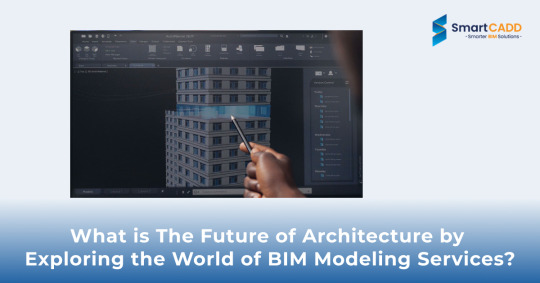
The world of architecture is continuously evolving, powered by advancements in technology and shifts in design philosophy. At the forefront of this transformation is BIM Modeling services, a revolutionary approach that has redefined the way architects and engineers design, develop, and manage building projects. This article delves into the future of architecture through the lens of BIM, exploring its potential to reshape the industry.
1. The Rise of BIM in Architecture:
What Makes BIM Stand Out? At the heart of the architectural evolution lies Building Information Modeling, known widely as BIM which rethinks the very foundations of design and construction. Let’s break down what makes BIM a game-changer:
A Unified Model: Imagine all project details – from architectural designs to electrical schematics – living in a single, accessible model. BIM does just that, ensuring everyone from architects to construction workers are working from the same page.
Real-time Collaboration: Gone are the days of back-and-forth emails and misplaced files. BIM fosters a collaborative ecosystem where changes by one team member are immediately available to all, reducing errors and accelerating project timelines.
Cost Efficiency: By identifying potential issues early on, BIM helps in avoiding costly mistakes and reworks, making budget overruns a thing of the past.
Tips for Integrating BIM into Your Workflow:
Start Small: Implementing BIM doesn’t have to be an all-or-nothing approach. Begin with smaller projects to understand its impact and gradually scale up.
Invest in Training: Ensure your team is well-versed in BIM software and processes. This upfront investment pays off in smoother project execution.
Embrace Change: Adopting BIM requires a shift in mindset. Be open to changing long-standing processes for the better.
2. Enhancing Collaboration and Efficiency:
Why is Collaboration Key in Architecture? Bringing a building to life from initial sketches to the final construction, depends on seamless collaboration. Here’s why enhancing collaboration through BIM Coordination Services is crucial:
Understanding Across Disciplines: BIM bridges the gap between various disciplines, enabling architects, engineers, and contractors to have a unified understanding of the project.
Streamlined Decision Making: With all data centralized, decisions can be made quickly and efficiently, keeping projects on track.
How to Maximize Collaboration with BIM:
Regular Check-ins: Schedule frequent meetings to review the BIM model and ensure alignment across teams.
Clear Communication Channels: Establish defined channels for communication to avoid information silos.
Leverage Cloud-Based Tools: Utilize cloud-based BIM platforms for real-time access and updates from any location.
3. Cutting-edge Technologies in BIM:
Exploring the Horizon: Future BIM Technologies: The landscape of BIM is constantly evolving, with new technologies promising to further revolutionize the field. Here are some trends to watch:
Artificial Intelligence (AI): AI can automate routine tasks, from generating design alternatives to predicting project outcomes, freeing up architects to focus on innovation.
Cloud Computing: Offers unparalleled flexibility and scalability. Cloud platforms facilitate easier collaboration and data sharing across the globe.
Considerations for Adopting New Technologies:
Evaluate Your Needs: Before jumping on the latest tech bandwagon, assess whether it addresses a specific need or challenge within your workflow.
Compatibility: Ensure new technologies integrate well with your existing BIM software to avoid disruptions.
Future-Proofing: Opt for solutions that offer regular updates and support to keep pace with the rapidly changing tech landscape.
4. Sustainable Design and Green Building:
What Does Sustainability Mean in Architecture? Sustainable design goes beyond minimizing the negative environmental impact. It involves creating spaces that are efficient, in harmony with the environment, and capable of adapting to human needs without compromising the future.
Three Pillars of Sustainable Design with BIM:
Energy Efficiency: By leveraging BIM, architects can simulate a building’s energy consumption, allowing for the design of structures that consume less power and reduce greenhouse gas emissions.
Material Sustainability: BIM aids in selecting materials that are durable, recyclable, and have a minimal environmental footprint, ensuring a project’s long-term sustainability.
Water Conservation: Through precise modeling, BIM can help design water-efficient buildings, incorporating systems like rainwater harvesting and efficient wastewater management.
Making Sustainability a Priority:
Integrate Sustainability from the Start: Consider environmental impacts at the beginning of the design process, not as an afterthought.
Prioritize Renewable Energy Sources: Incorporate solar panels or geothermal systems in your BIM models.
Consider the Life Cycle: Use BIM to analyze the environmental impact of materials over the building’s life, choosing those with lower carbon footprints.
5. The Impact of BIM on Education and Training:
Preparing the Next Generation of Architects: As BIM becomes ever-present in the field of architecture, its integration into education and training is critical. Future architects need to be proficient in BIM to effectively contribute to and lead projects.
Key Aspects of BIM Education:
Hands-on Experience: Learning BIM is not just about theory. It requires practical, hands-on experience with software and real-world projects.
Interdisciplinary Approach: BIM training should include insights from various disciplines, preparing students for the collaborative nature of modern architectural projects.
Enhancing BIM Training:
Collaborate with Industry: Educational institutions should partner with architectural firms to provide students with exposure to real-world BIM applications.
Update Curriculum Regularly: Ensure that the curriculum reflects the latest BIM technologies and practices.
Promote Certification: Encourage students to pursue certifications in BIM to enhance their employability and professional development.
By focusing on these elements, the architectural community can ensure that the next generation is not only skilled in BIM but also passionate about pushing the boundaries of what’s possible in design and construction.
Conclusion: SmartCADD – Pioneering the Future with BIM:
As we look toward the future of architecture, it is clear that BIM Modeling Services will continue to play a pivotal role in shaping the industry. SmartCADD, with its extensive expertise in computer-aided design and drafting, is at the forefront of this transformation. Offering a comprehensive suite of BIM and CAD services, along with the invaluable guidance of skilled BIM Consultants, SmartCADD is not just responding to the current trends but is actively contributing to the future of architectural design. By harnessing the power of BIM, SmartCADD is enabling architects and designers to create more complex, sustainable, and efficient buildings, paving the way for a new era in architecture.
Source URL:
0 notes
Text
Affordable Building Information Modeling (BIM) Services in Oxford, UK

Silicon EC UK Limited is the most trusted and fastest-growing engineering company in the UK which provides Building Information Modeling Services to our clients. It specializes in providing high-quality BIM Drafting Services, BIM Drawing Services, and 3D BIM Modelling structures with the help of BIM Software.
Visit our website :
#bim services#bim consultant#bim design#bim drafting#3d bim modeling services#structural bim services#bim revit#Building Information Modeling Services#Revit BIM Modeling Services#BIM Services#BIM Shop Drawing Services#BIM Clash Detection Services#LOD BIM Service#Revit BIM Family Creation Services#Structural BIM Services#BIM Coordination Services#Point Cloud to BIM Services#BIM 3DModeling Services#Building Information Modeling#Revit BIM Services#BIM Design Services#BIM Consulting Services#bim service providers#BIM Services London#bim service provider#BIM service providers in London#BIM drafting London#bim modelling services#bim services provider#BIM service provider London
0 notes
Text
BIM Services

S E C D Technical Services LLC stands as a pioneering force in the realm of Building Information Modeling (BIM) Services, committed to delivering cutting-edge solutions that redefine the landscape of construction and design. With an unwavering dedication to excellence, we offer a comprehensive suite of BIM services tailored to meet the diverse needs of our clients. Our team comprises seasoned professionals and experts in the field of architecture, engineering, and construction, who seamlessly integrate advanced technologies to optimize the entire project lifecycle.
Choose S E C D Technical Services LLC for a seamless BIM experience that elevates your Engineering projects to new heights. Your vision, our expertise – together, we build success.
For More Details Visit our Website:
#BIM Engineering Modeling Services#BIM Engineering Services Dubai#BIM Consultancy Engineering Services#BIM Design and Drafting Services#BIM Consultant Engineering Services#BIM Services#BIM Engineering Firm#BIM Clash Detection Services#BIM MEP Coordination#Scan to BIM Services Dubai#BIM Coordination Services#MEP BIM Modeling#BIM Outsourcing Dubai#BIM Modeling Services Dubai#Building Information Modeling UAE#Building Information Modeling Services UAE#Building Information Modeling Services#BIM CAD Services#BIM Engineering Consultants#Scan to BIM Dubai#BIM Engineering Company#BIM Consultancy Services#BIM Modeling Services#Revit BIM Modeling#BIM Engineering Services
0 notes
Text
Expert BIM coordination services offer a comprehensive solution for optimizing the construction process. Utilizing Building Information Modeling (BIM), a potent tool for collaboration, communication, and coordination among construction project stakeholders, including architects, engineers, contractors, and owners, ensures unified access to project data and models from start to finish.
0 notes
Text

#bim coordination services#bim modeling services#bimtechnology#clash detection#mep services#architecture#3d model#Clash Detection services
1 note
·
View note
Text
Why Is Clash Detection So Important In BIM?
The goal of Building Information Modeling (BIM) is to achieve collaboration and coordination in the implementation of design and various other elements of any construction project. Whenever designs from different disciplines are joined together on a common platform, many hard and soft clashes and workflow clashes occur.
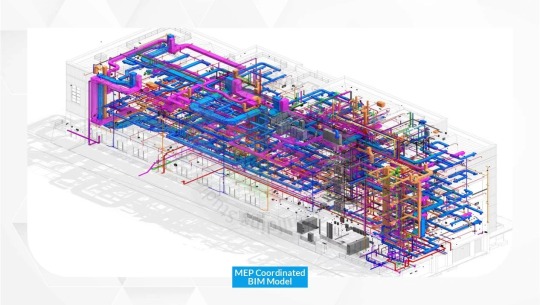
BIM efficiently helps contractors and construction engineers in detecting these clashes, by considering the constructability or operations of the building.
What is Clash Detection
Clash Detection is a part of the Building Information Modeling (BIM) process wherein experts like contractors, sub-contractors, architects, project workers, sub-workers, and so on, can distinguish the conflicts in the construction cycle early on, and resolve them when still within the structural design discipline.
For this, a 3D BIM Model proves to be of great help settling conflicts in no time through a computerized approach so that there could be potential time, money, manpower, and resource-saving during that actual construction.
How to go for detecting and resolving clashes?
A clash occurs when variables of different models occupy the common space. Clashes may be geometric, like pipes passing through walls. Schedule-based clashes occur when various sequential aspects of work are scheduled to occur simultaneously or in reverse order, or clashes may occur when changes and updates are not made to the drawings.
To sum up, when the parts of various building modules cross one another to occupy the same space, clashes do take place. If it is tracked down that extra space shared around the gear and the contention occurred between the work process and equipment planning, there are high odds of detecting clashes.
To understand this, let us take an example that would explain how BIM can help in identifying clashes and avoid a scenario like that.
Pipework might have clashes with multiple beams portraying that many numbers of clashes in the model. Simply, by changing the positioning of pipework, one can resolve the clashes to have everything praised and in place. It best to detect such clashes within the planning phase of the BIM cycle, allowing one to inspect and resolve.
Read More : Learning About Clash Detection and Related Services
Why clash detection is so important?
Clash detection aids in effectively identifying, inspecting, and reporting interference in a construction project model. It is useful in checking work status and wanes down human errors during model inspections. Clash detection is important in BIM because it integrates several models (structural, MEP, etc.) into a single BIM model.
With the clash detection feature, faults that conventionally were detected on the site and involved high cost and schedule implications, if corrected at that stage, can now be seen by BIM service providers in the office even before visiting the site. With BIM, clash detection is made possible for even objects within objects (like a steel rod immersed inside a concrete wall). Learn all about BIM and Clash Detection to understand its true digital applicability.
Original source : BIM Clash Detection Services
0 notes
Text
What is BIM Modeling? And How Construction Management uses it
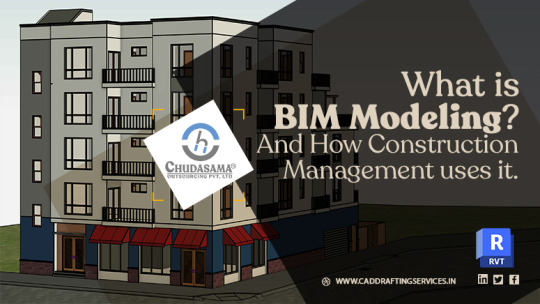
BIM modeling services are a method that has completely changed the planning of construction projects. This can now be changed by tapping creating a digital modeling project. Due to this, construction errors are reduced and the final product is superior.
#bim modeling services#3d bim modeling#architectural bim services#structural bim services#revit modeling services#3d bim modeling services#bim outsourcing services#bim outsourcing companies#bim services#scan to bim services#point cloud to bim services#revit 3d modeling services#bim architectural services#revit bim services#bim coordination services
0 notes
Text
youtube
#bimdesignservices#bim modeling services#cad drafting services#cad drawings#cad design#bim 360 docs#autocad#bim software#bim coordination services#dsp consultants#Youtube
0 notes
Text
AEC Innovations: 3D BIM Coordination Services for Success
Unlock the Power of Seamless Construction Integration with Our 3D BIM Coordination Services. Streamline your project's workflow, minimize clashes, and maximize efficiency through our expert coordination solutions. Our team leverages cutting-edge technology to bring your vision to life, ensuring every element fits together flawlessly. From initial planning to final execution, trust us to synchronize your project with precision and finesse. Experience the difference of coordinated excellence.
#3D BIM Coordination Services#3D Reality Capture For Building Construction#Building Information Modeling Solution Companies#BIM 360 Model Coordination
0 notes
Text
Leveraging the Benefits of MEP BIM Coordination Services for Sustainable Construction
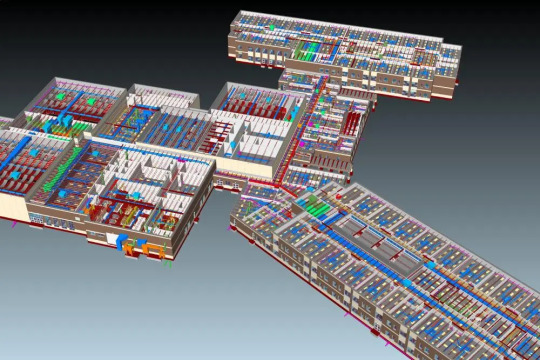
MEP systems, the intricate network of vital building components including heating, ventilation, air conditioning, lighting, plumbing, and electrical systems, serve as the lifeline of any structure, ensuring its functionality and performance. This amalgamation demands meticulous coordination to harmonize its functionality and performance. Traditionally, MEP BIM coordination process has been a labor intensive and error prone process, fraught with the peril of errors, clashes, and consequential delays during construction phases. However, the advent of Building Information Modeling (BIM) technology has heralded a transformative era in this domain.
1. Enhanced Collaboration
MEP BIM coordination services emerge as the conduit for seamless collaboration, forging a unified platform wherein architects, engineers, and contractors, exchanging insights and data fluently. This symbiosis fosters a harmonized vision across stakeholders, mitigating errors, curbing rework, and fostering sustainable construction practices.
2. Early Clash Detection
The embracement of 3D Modeling Services technology orchestrates a virtual realm where MEP systems are meticulously modeled and woven into the architectural design. This allows precursory clash detection, unveiling potential conflicts amid diverse MEP components are discovered and sorted in the nascent stages of design. This pre-emptive strike against clashes yields a dual boon - truncating construction delays and slashing the costly on-site rectifications, fostering sustainability via efficient resource allocation.
3. Optimized Energy Efficiency
MEP BIM coordination services unfurl designers to weave simulations of MEP system performances within a digital realm. By analyzing factors of thermal dynamics, airflow metrics, and lighting, designers craft an energy-optimized tapestry, and implement sustainable design strategies by Integrating renewable energy reservoirs and imbuing HVAC systems with eco-sensitivity resulting in the reduction of carbon footprint and operational costs.
4. Improved Indoor Environmental Quality (IEQ)
Sustainability construction transcends energy efficiency; it encompasses the sanctum of indoor environmental quality (IEQ). MEP BIM coordination services provide the conduit for designers to orchestrate HVAC systems, providing thermal comfort and indoor air quality for occupants. Delving into airflow patterns and temperature modulation, designers curate habitats conducive to occupants' well-being and productivity.

5. Cost Savings
The streamlined orchestration of MEP systems through BIM technology precipitates tangible cost savings across the construction process. Early clash identification begets clashes and conflicts, contractors can circumvent the costly rework and on-site alterations. Additionally, resource optimization and streamlined construction sequencing leads to truncated project timelines and labor expenses, fortifying the project's sustainability credentials.
6. Risk Mitigation
MEP Clash Detection Services stand sentinel against project vulnerabilities by providing a comprehensive overview of the building's MEP systems before construction’s inception. This proactive vigilance engenders pre-emptive issues, defusing spatial conundrums and design dissonances before they escalate into costly problems on-site. By assuaging the risks associated with construction delays and errors, projects unfurl more seamlessly and sustainably.
7. Long-Term Sustainability
Embracing MEP BIM coordination services not only benefits the current project but also accords to long-term sustainability. By honing energy efficiency, elevating IEQ standards, and paring operational overheads, buildings constructed using MEP BIM coordination services are better equipped to meet the demands of a rapidly changing world. They emerge as bastions of resilience, cost-efficiency, and environmentally friendly, inscribing a sustainable legacy for posterity.
In summation, the imperative of harnessing Scan to BIM Services is essential for achieving sustainable construction practices. By fostering collaboration, detecting clashes early, optimizing energy dynamics, enhancing IEQ, and ushering cost savings, these services emerge as vanguards in the crusade for sustainability. Embracing these services not only augments individual projects but also catalyzes the broader goal of creating a greener and more sustainable built environment.
#mep coordination services#mep bim coordination services#clash detection and bim coordination services#mep clash detection services#clash detection services#bim coordination services#3d modeling services#scan to bim services
0 notes
Text
Revolutionizing Construction: The Role of BIM in MEPF

The construction industry has witnessed a revolutionary transformation in recent years, with technological advancements playing a pivotal role in streamlining processes and enhancing efficiency. Building Information Modeling (BIM) has emerged as a game-changer, particularly in the Mechanical, Electrical, Plumbing, and Fire Protection (MEPF) disciplines. This article delves into the profound impact of BIM on MEPF, exploring how this innovative technology is reshaping the construction landscape.
Understanding BIM in MEPF
Digital representations of a building's structural and operational features are used in the collaborative BIM process. In the context of MEPF, BIM involves creating and managing a 3D model that integrates mechanical, electrical, plumbing, and fire protection systems within a virtual environment. This digital model serves as a comprehensive and centralized source of information for all stakeholders involved in the construction process.
Improved Coordination and Clash Detection
One of the primary advantages of employing BIM in MEPF is the enhanced coordination it facilitates. Traditional construction methods often led to clashes and conflicts among different systems, resulting in costly rework and delays. BIM enables real-time clash detection by overlaying the individual MEPF models, allowing project teams to identify and resolve conflicts before they materialize on the construction site. This proactive approach minimizes the likelihood of on-site issues, ensuring a smoother construction process.
Enhanced Collaboration and Communication
BIM acts as a collaborative platform that fosters communication among project stakeholders. MEPF professionals can work concurrently on the same model, reducing the time spent on coordination and ensuring that all systems are seamlessly integrated. This collaborative environment promotes transparency and efficiency, allowing teams to share information and make informed decisions throughout the project lifecycle. Improved communication leads to fewer errors, reduced rework, and ultimately, increased project success.
Accurate Quantity Takeoffs and Cost Estimations
BIM in MEPF goes beyond visual representations; it also serves as a robust tool for accurate quantity takeoffs and cost estimations. The detailed information embedded in the digital model enables automated calculations of material quantities, helping project managers and estimators generate precise cost estimates. This capability enhances budgeting accuracy and allows stakeholders to make informed financial decisions throughout the construction process.
Lifecycle Management and Maintenance
BIM's impact extends beyond the construction phase into the operational life of a building. The digital model contains valuable information about the MEPF systems, including specifications, maintenance schedules, and equipment details. This data facilitates efficient facility management, enabling owners and facility managers to optimize maintenance processes, schedule inspections, and make informed decisions about system upgrades or replacements. BIM in MEPF ensures that the benefits of digitalization persist long after the construction dust settles.
Sustainable Design and Energy Efficiency
In an era where sustainability is a top priority, BIM plays a crucial role in promoting environmentally friendly practices in MEPF design. The 3D modeling capabilities allow designers to simulate and analyze the performance of MEPF systems, optimizing them for energy efficiency and sustainability. BIM enables the evaluation of alternative design scenarios, helping teams identify the most environmentally friendly and cost-effective solutions. This focus on sustainability aligns with the global push towards green construction practices.
Regulatory Compliance and Documentation
MEPF systems are subject to stringent regulatory requirements, and compliance is non-negotiable. BIM simplifies the process of ensuring regulatory compliance by providing a centralized repository for all relevant documentation. From equipment specifications to safety standards, BIM ensures that every detail is documented and easily accessible. This not only streamlines the approval process but also serves as a comprehensive record that can be invaluable during audits or inspections.
Conclusion
In conclusion, the role of BIM services in revolutionizing construction, particularly in the MEPF disciplines, cannot be overstated. The technology's ability to enhance coordination, improve collaboration, streamline cost estimation, facilitate lifecycle management, promote sustainability, and ensure regulatory compliance makes it an indispensable tool for modern construction projects. As the construction industry continues to evolve, embracing BIM in MEPF is not just an option but a strategic imperative for those seeking to stay ahead in a competitive and dynamic environment.
0 notes
Text
Best Building Information Modeling Services in Birmingham, UK at a low cost
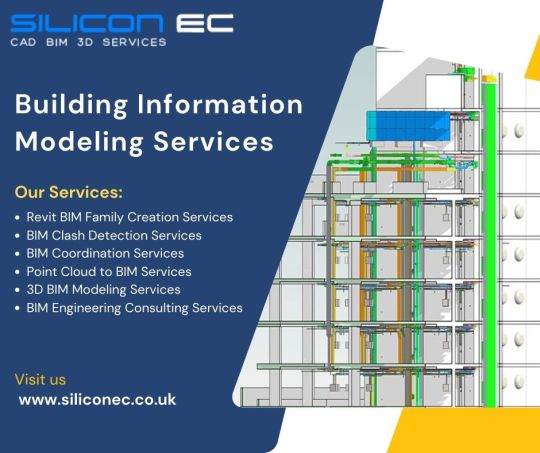
Silicon EC UK Limited offers comprehensive Building Information Modeling Services in Birmingham, UK, catering to the evolving needs of the AEC industry. As an engineering leading provider of BIM Engineering Services, we specialize in leveraging advanced technology and expertise to streamline the design, construction, and management processes of building projects.
Our collaborative approach fosters transparency and accountability, fostering trust and satisfaction among our clients. Contact us today to learn more about how we can support your next Building Engineering Project.
For More Details Visit our Website:
#bim services#bim consultant#bim design#bim drafting#3D BIM Modeling Services#structural bim services#bim revit#BIM Services#BIM Shop Drawing Services#BIM Clash Detection Services#LOD BIM Service#Revit BIM Family Creation Services#Structural BIM Services#BIM Coordination Services#Point Cloud to BIM Services#BIM 3DModeling Services#Building Information Modeling#Revit BIM Services#BIM Design Services#BIM Consulting Services#bim service providers#BIM Services London#bim service provider#BIM service providers in London#BIM drafting London#Engineering#Engineering Services#CAD Design#CAD Drafting#CAD Drawing
0 notes
Text
Top-rated MEP Coordination Services in the USA from ASC Technology Solutions
Partner with a trusted MEP Coordination Services in Florida, USA. ASC Technology Solutions is known for offering MEP BIM Coordination Services and value engineering, with years of experience in the field, we are known for providing excellent MEP BIM Coordination Services and value engineering at affordable prices. Our team works closely with clients to ensure that the entire model is well-coordinated and ready for installation while sticking to all relevant standards and specifications. If you require further information or wish to collaborate with us, please feel free to contact us anytime.
1 note
·
View note
Text
Seamless Project Success with MEP Coordination Services

🏗️MEP coordination plays a significant role in the construction process, identifying potential clashes and errors in between. It also serves better understanding, efficient workflow, and enhanced accuracy in design. 🏨
Deeply understand the role of MEP coordination in the project’s success.
#mep coordination#mep bim services#mep coordination services#bim mep services#mep coordination drawings#mep bim modeling services#mep coordination process#bim mep coordination#mep modeling services#mep 3d modeling#mep bim coordination
1 note
·
View note